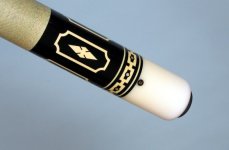Hey guys gals the greyghost needs a little help taking photos.
My aunt has her own little studio in lafayette and takes great photos but I know that sometimes cues are much more trouble b/c of glare and such.
I know quite a few of our members do great photo work and was hoping I could maybe get a few pointers from these experienced in this arena.
Things like how to get the grain in Brazilian Rose wood to show in a photo.
What kind/type of flash/s ????
Bo knows baseball, the greyghost knows pool......when it comes to taking pictures ol' GG is just a fool lol
Any info that I could pass on to her would be great and very much appreciated.
thanks again and happy thanksgiving everyone,
Keebie
My aunt has her own little studio in lafayette and takes great photos but I know that sometimes cues are much more trouble b/c of glare and such.
I know quite a few of our members do great photo work and was hoping I could maybe get a few pointers from these experienced in this arena.
Things like how to get the grain in Brazilian Rose wood to show in a photo.
What kind/type of flash/s ????
Bo knows baseball, the greyghost knows pool......when it comes to taking pictures ol' GG is just a fool lol
Any info that I could pass on to her would be great and very much appreciated.
thanks again and happy thanksgiving everyone,
Keebie

